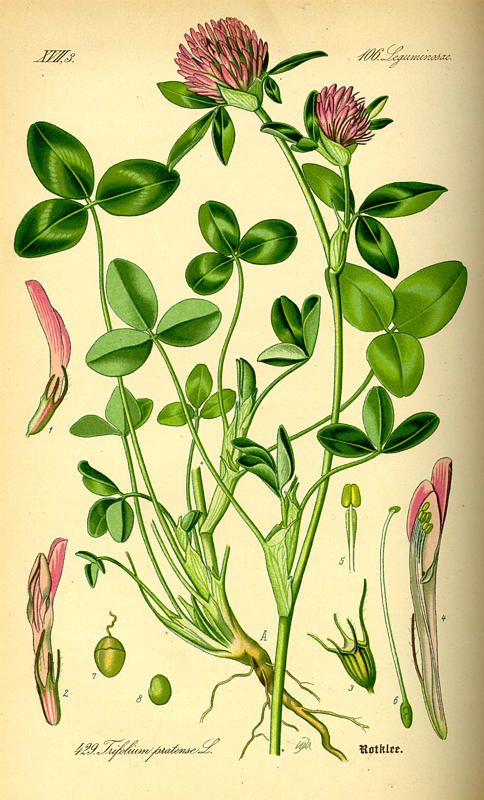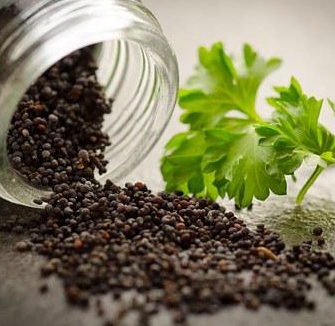“Red Clover, Red Clover, send Susie on over!” Or maybe it’s supposed to be Red Rover…
Red Clover is a wonderful little gem of a plant that is so common most people don’t even realize they’ve seen it before.
It grows wild all over most of Colorado, especially in grassy fields and other areas where animals graze. It particularly likes areas above 7,000 feet but has been found growing almost anywhere in Utah, Oregon, New Mexico, and sometimes California.
Occasionally planted in fields by ranchers, it is a highly nutritious (and tasty) plant for grazing animals, as well as a nitrogen fixer, which means it adds nitrogen back into the soil.
This is particularly helpful for re-habilitating over-grazed and over-farmed land.
It is also a wonderful plant ally for increasing your overall health and vitality.
Red clover has become most famous likely due to the fact that it has been used in several different herbal cancer remedies for many centuries.
Interestingly enough, it’s action as a blood-purifier (or alterative) is probably due to its high nutrient content. If you are giving your self high levels of nutrients, your body will be healthier and more likely to fight off whatever issues you may have going on.
This isn’t to say that these remedies (such as the Essiac formula) aren’t effective, it just needs to be thought about as to why they are helpful.
In addition to being highly nutritive, it is also very tasty, and an herb that is relatively safe to drink every day; both of these aspects, along with its potential cancer-fighting qualities, are reason enough to drink some Red Clover tea every day.
Red Clover is also great for wet and mucousy coughs; it helps to expel the mucous more effectively as well as calming down the excessive cough reflex that happens when someone can’t get stuff out of their lungs.
As a member of the legume family, red clover is related to soy, and like soy, it contains phytoestrogens. Phytoestrogens can be helpful in balancing hormones, both in someone who is high in estrogen and also if they are low in estrogen. Why this is so is a much longer conversation….
Now this aspect gets a bit trickier; some would say that people with estrogen-dependent cancers shouldn’t take red clover or other phytoestrogen containing plants because of the potential to stimulate the cancer growth, yet red clover has been used for a long time as a cancer remedy…can you see where allopathic and herbal medicine might butt heads on this one?
Because of these two conflicting ideas, there is no one right answer; especially not when you throw in how different people react to plants in different ways. If you are considering red clover and you have questions about all of these, come on in and ask! We do our best to provide you with answers that consider both sides of the argument.
Materia Medica
Latin Name: Trifolium pratense
Common Name(s): Red Clover
Parts Used: Blossoms with three small leaves at the base
Botanical Description:
Key Constituents:
Harvesting Guidelines
Red clover blossoms are ready to be plucked one to two weeks after first bloom, and can be harvested up to three times in the establishment year. Simply pop the blossom off, leaving the rest of the plant undisturbed.
Primary Uses:
- Blood purification – long used in detoxification programs and anti-cancer regimens, this herb is most well known for it’s cleansing properties
- Phlegm in the lungs, wet coughs – great at helping to expel excess mucus in the lungs
- Nourishing tonic – because it is so high in vitamins and minerals it is great to drink every day to increase your overall nutrient intake
- Hormone balancing – because of it’s phytoestrogen activity it may help to balance out hormones in women
Preparation & Dosing:
- Tea: 1-3 teaspoons of dried flowering tops in 8 ounces of hot water, steep for half an hour to overnight (the longer you steep, the more minerals will be extracted) and drink 2-3 cups/day.
- Tincture: 2-4 mL of a 1:5 tincture 3x/day.
- Dosage information from Medical Herbalism by David Hoffmann.
Energetics: Neutral, slightly dry, slightly sweet
Parts Affected: lungs, circulatory system
Actions:
- alterative
- anti-inflammatory
- anti-tussive
- blood thinning
- expectorant
- nutritive
- phyto-estrogen
Cautions:
- If collecting yourself, do not collect from roadsides or other areas where chemicals or toxins may be present as this plant loves to collect things form its environment
- Due to its phytoestrogen content it may be contraindicated in people with estrogen-dependent cancers, however, the jury is still out on this one
- Contains coumarins and may interact with blood thinning medications, do not take if you are on any or have a blood clotting disorder
- Avoid one week before surgery
- Do not take in large amounts during pregnancy (a small amount mixed into an over-all blend is just fine)




